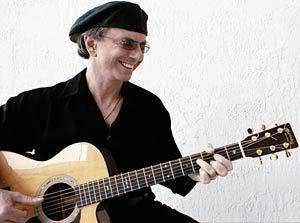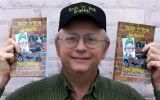
It was just a tiny portable music delivery system, but what an impact it had. This electronic device could fit in the palm of your hand and when equipped with a nine-volt battery would supply you with hours of music as long you were within range of an AM radio station.
For its time, the transistor radio was as revolutionary as today's i-pod, which can store your favorite songs for instant recall whenever you want.
The i-pod's precursor was invented in 1953 and substituted bulky vacuum tubes with transistorized circuitry to reduce the the size of the appliance from that of a toaster to a couple of decks of cards.
By the early 60s, the electronics industry had flooded the market with a variety of models.
I got one of the new gadgets at about the same time I started delivering newspapers for the Escanaba Daily Press.
My radio was a memorable turquoise in color and I carried it on my route every afternoon listening to music and news broadcasts as I tossed papers on porches of subscribers bordering the Escanaba Country Club.
The miraculous machine received two AM stations during the day, more at night. I could choose between the powerful WDBC at 680, or the weak WLST at 600, both located on Ludington St.. There were no FM stations in Escanaba at the time, and even if there were, my radio wasn't configured for that format anyway.
Those competing local broadcast facilities offered everything you needed in radio, whether it was news or music.
Of course, I read the front page headlines as I was walking along, but I could also get the latest developments on the CBS News with Douglas Edwards at the top of the hour on WDBC. Music offerings ranged from the easy listening songs of the era to light pop tracks.
I took over route 47 from John LaPorte, longtime Escanaba photographer, in July, 1963 and kept it through high school. During that time, the artists broadcast on local radio evolved from The Four Seasons and Bobby Vinton to The Supremes, Beach Boys and Beatles. Later, deejays would add Simon & Garfunkel, The Turtles, and Bobbie Gentry to the list. Yes, you could still hear Frank Sinatra, Tony Bennett and Pat Boone, too. The news, however, was often the same.
The assassination of President Kennedy was announced over the PA system at the Escanaba Junior High, where I was attending 7th grade, a little after 2 p. m. on Nov. 22. The Daily Press was published late that day as the staff rushed to revise the front page to reflect the tragic developments in Dallas. Events seemed to repeat themselves in later years as I delivered newspapers reporting the shocking political murders of Rev. Martin Luther King in Memphis and Sen. Robert F. Kennedy in Los Angeles. 
In fact, the news and music worlds intersected when Dion DiMucci released "Abraham, Martin and John" in the fall of 1968. "Has anybody seen my old friend Bobby; Can you tell me where he's gone?" the Bronx-born singer asked. The tribute to Lincoln, King and the slain Kennedy brothers became a No. 4 hit.
Having a "transistor," as the compact receivers came to be called, meant I had control over the listening experience, unlike the car radio, or the one on the kitchen counter. My little radio caused me to be interested in current events, even music, since listening requires you to be actively involved.
One day in 1969, I walked my route for the last time and passed it on to my brothers Mark and Kevin. In six years, I had saved enough to pay my tuition at Bay de Noc Community College for two years.
My interest in music and the news media continued at Bay where I edited the Beacon student newspaper and at Central Michigan University in Mount Pleasant where I received a degree in journalism. After graduation, I found myself working in the editorial department of the newspaper I used to deliver and later in public relations for the Upper Peninsula Commission for Area Progress.
In 1985, my excitement for music surfaced again as my wife Sue and I opened our retail record store. We even wrote to Dion and he sent us one of his trademark caps which he had autographed.
Then, a year and a half ago, my friend Rick Rudden, editor of the Daily Press, asked me to contribute this weekly column, finally merging my love of music and writing.
Although I've enjoyed rewarding careers in both those fields, my early interest stems from a little transistor radio, turquoise in color, with a big impact.


 I've enjoyed rock music and writing since I was a teenager in the 60s. I feel lucky to have been around when rock's greatest stars created their most enduring hits. At the same time I found I enjoyed writing, as well. I worked on my high school newspaper and magazine, was editor of several college publications and earned a bachelor's degree from Central Michigan University in 1973. I worked for the daily newspaper in my hometown after graduating, becoming managing editor after a few years. By the 1980s, I moved into public relations. In 1985, my wife Sue and I opened a retail music store, The Record Rack, which we still own. Rock 'n' roll has been integral to me and for the last 2O years I've been earning my living from it even though I don't have a musical bone in my body. In recent years, I've also I edited a small local magazine and launched a micro FM radio station. Now, I'm finally combining my love of writing and rock 'n' roll. I can't sing a note, but I know what I like. I'll tell you all about it when you read on. I hope you have as much enjoyment reading these installments as I've had writing them.
I've enjoyed rock music and writing since I was a teenager in the 60s. I feel lucky to have been around when rock's greatest stars created their most enduring hits. At the same time I found I enjoyed writing, as well. I worked on my high school newspaper and magazine, was editor of several college publications and earned a bachelor's degree from Central Michigan University in 1973. I worked for the daily newspaper in my hometown after graduating, becoming managing editor after a few years. By the 1980s, I moved into public relations. In 1985, my wife Sue and I opened a retail music store, The Record Rack, which we still own. Rock 'n' roll has been integral to me and for the last 2O years I've been earning my living from it even though I don't have a musical bone in my body. In recent years, I've also I edited a small local magazine and launched a micro FM radio station. Now, I'm finally combining my love of writing and rock 'n' roll. I can't sing a note, but I know what I like. I'll tell you all about it when you read on. I hope you have as much enjoyment reading these installments as I've had writing them.


3 comments:
I really enjoyed reading your story!!VERY COOL!!!Marcy
Gee were you the paper boy on the 1300 block of S. 15TH st? I always wondered what happened to Dave Tempe who was on late nights at WlS-t.
Hello,
My paper route all those years ago only extended to the 1200 block of south 16th St. Sorry, I don't have any information regarding Dave Tempe.
Regards, Steve
Post a Comment